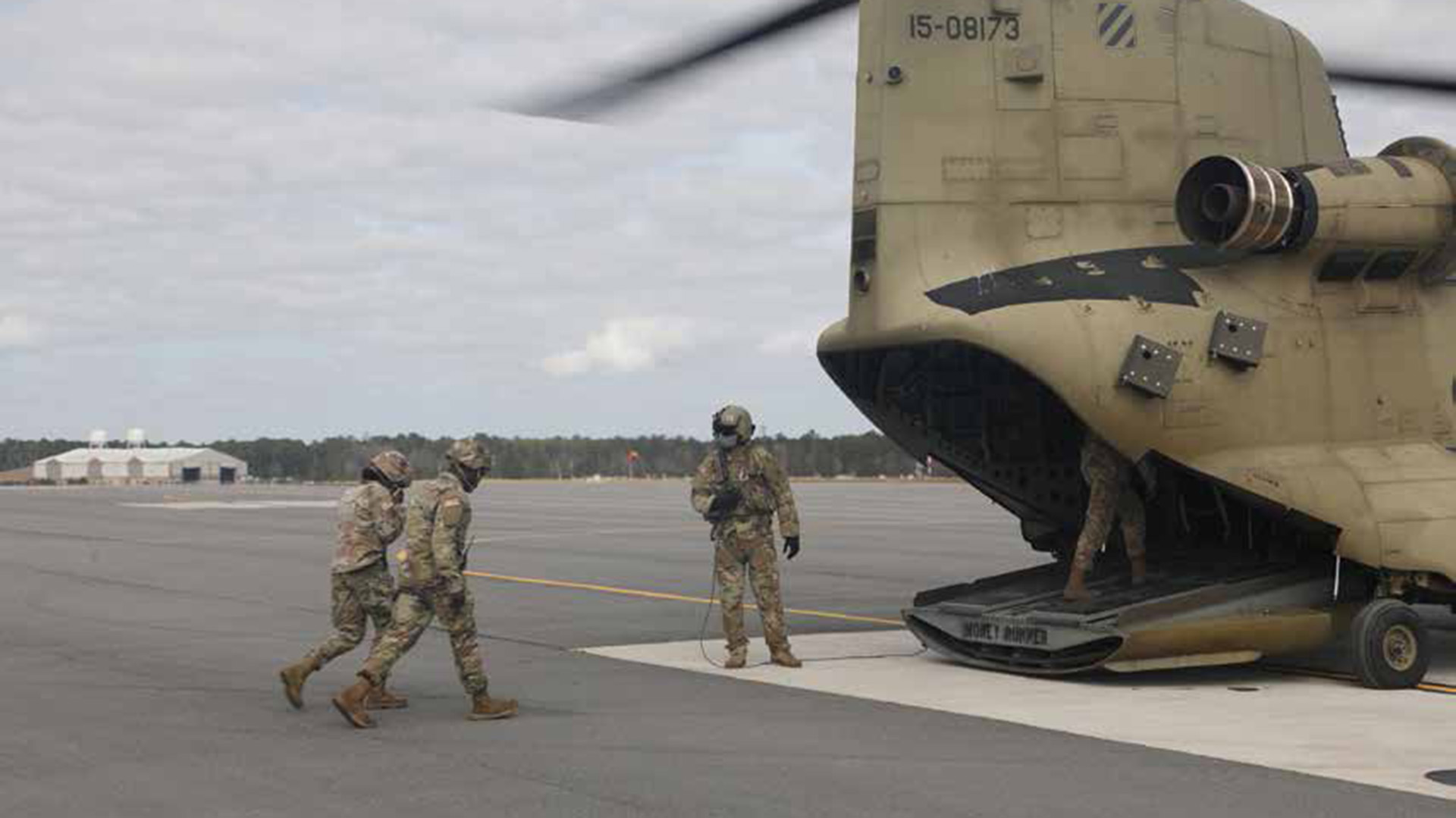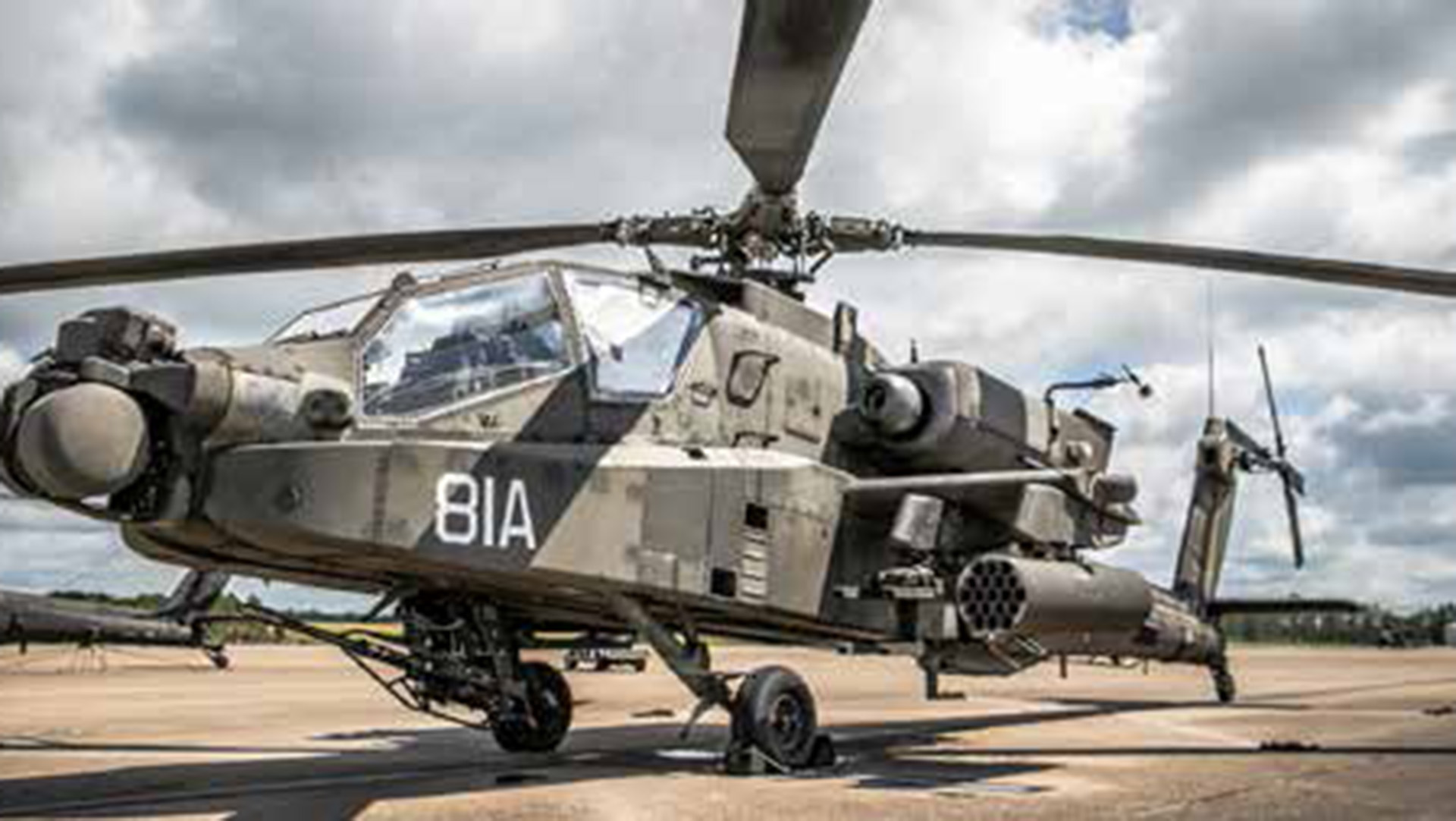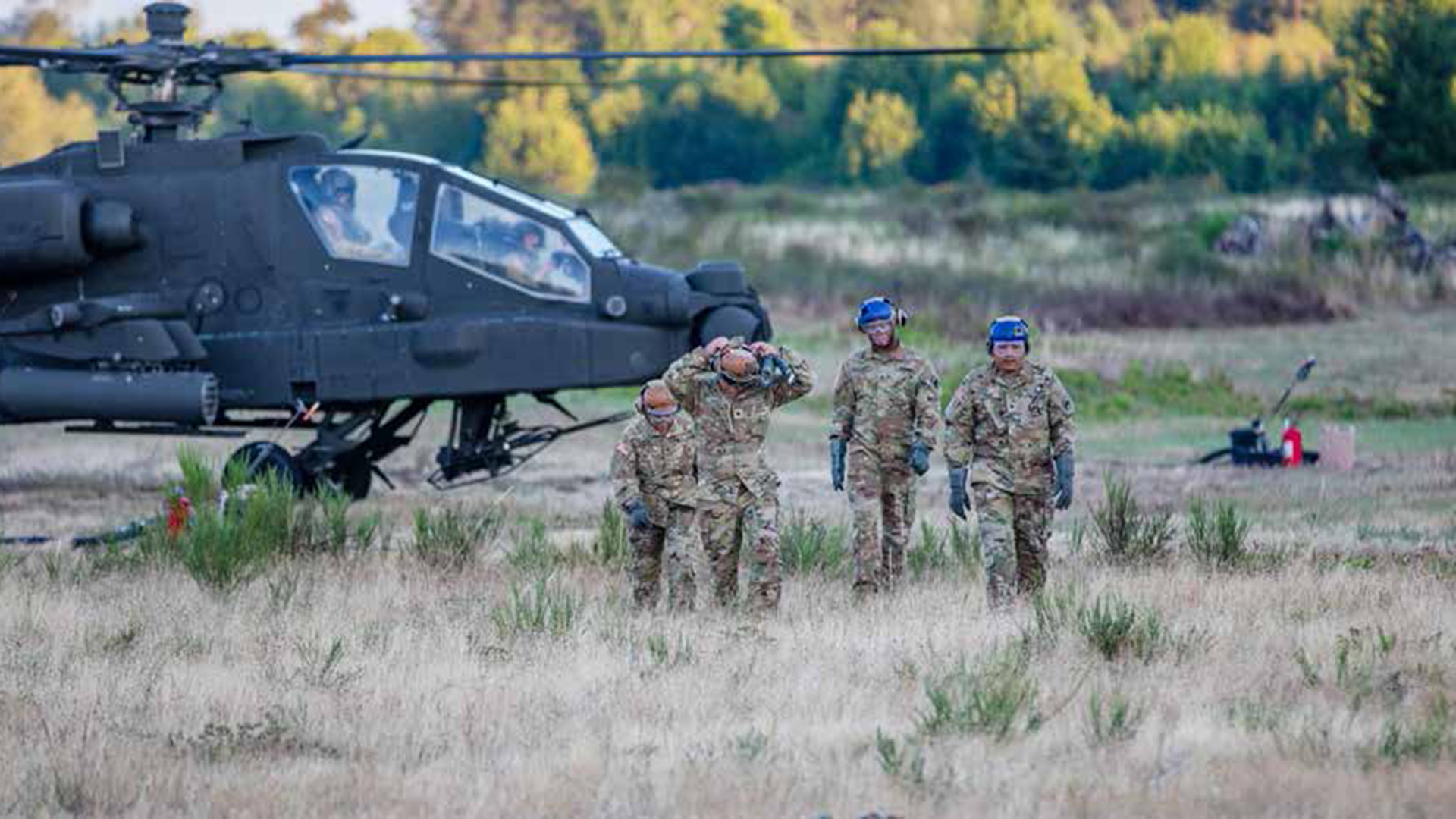The Future of Army Aviation Logistics Sections Within the Combat Aviation Brigade
By CPT Jake R. Maltz
Article published on: October 1, 2024 in the Aviation Digest October-December 2024 Issue
Read Time: < 5 mins

Soldiers conduct logistics airlift training on Wright Army Airfeld, Georgia. U.S. Army photo by SGT Laurissa Hodges.
Without argument, one can easily identify the significance of U.S. Army Aviation in future wars and conflicts for our nation. Army Aviation, through the combat aviation brigade (CAB), supports the ground force commander’s intent, providing essential firepower, reconnaissance, aerial movement, and medical evacuation to Soldiers on the ground. Within the CABs currently, each subordinate battalion has Army Aviation officers serving as the battalion logistics officer, or S4. These officers, trained to fly and employ aircraft in the operational environment as aviation officers, are expected to also become logistics professionals rapidly and without any training. Most of the S4s within the CAB will have an under-strength section with missing personnel and with noncommissioned officers not familiar with aviation platforms or planning logistic operations. These factors, combined simultaneously, may have disastrous effects in future conflicts and highlight changes that must be made immediately. To ensure Army Aviation’s success on future battlefields, S4 sections must have an officer-in-command (OIC) position filled by a logistics officer. Additionally, the S4 must have an assistant S4 position filled by an aviation officer.
The modified table of organization and equipment (MTOE) for battalion S4 officers in command positions within the CAB must change from a 15 series military occupational specialty (aviation and transportation) to a 90 series (multifunctional logistical branch) to ensure logistics are properly planned and controlled by subject matter experts. Additionally, the battalion S4 section must include an assistant 15 series officer to provide aviation experience to the logistics planning cell. This change in MTOE will place aviation units’ key leaders in positions to provide continuous logistical support for aviation operations in the austere operational environments of future conflicts.

Aviation Center Logistics Command, Fort Novosel, Alabama. Training, doctrine, and testing are all critical parts of the center's mission to develop Army Aviation's capabilities. Photo by Jerry Duenes.
Former President and Army GEN, Dwight D. Eisenhower, once observed, "You will not find it difficult to prove that battles, campaigns, and even wars have been won or lost primarily because of logistics." As an abnormally large consumer of logistical support, compared to the average ground unit, Army Aviation heavily relies on fuel and parts support to ensure operational reach of friendly forces. In future conflicts, Army Aviation units may be asked to operate far from the flagpole in austere environments that limit communications and support from higher headquarters. This will require logistics professionals, who are trained and possess experience with logistical operations, to run planning efforts for aviation units. An aviation officer with no logistical experience cannot fulfill this responsibility to the successful level required. The future operational environment highlights the necessity for a more robust logistics section within Army Aviation battalions, which will ensure that the capability to support the ground force will not be lost.
For these logistics officers to be successful, an aviation officer must also be placed within the S4 section. This personnel pairing will ensure the battalion is supported by a logistics officer who has the appropriate logistics experience and training. Tis logistics officer is paired with an aviation officer who has operational aviation expertise. Battalion logistics sections will be more successful in current operations and more adaptable for future conflicts by following these personnel reassignments.
Adding the logistics officer within the battalion logistics section, the aviation officers traditionally filling these positions will flourish. Adding an officer with logistics experience to the logistics planning cell will create an excellent broadening opportunity for that aviation officer. The officer will have opportunities to learn from the OIC, broadening the experience and expertise within the section. The aviation officer will also not be the sole point of failure regarding logistical planning within the organization, ensuring that the aviation officer can fulfill their aviator duties. The aviator can maintain currency and gain es essential hours in the development of their aviation career without the anxiety of failing the organization’s logistical needs.
Aviation battalion logistics sections must be filled with logistics officers—with an assistant aviation officer—to ensure units are properly prepared for conflicts of the future. These changes in manning will allow for logistics experience to be held at the battalion level, allowing for adaptability, responsiveness, and improvisation needed in future conflicts.
Manning the logistics section with an assistant aviation officer will provide the needed combination of logistics and aviation experience. Finally, the changes in manning will allow for development of the aviation officer traditionally put into the S4 role by allowing them to attain the yearly flight requirements without sacrificing the battalion’s logistics section.

An AH-64E refuels at a forward arming and refueling point on Joint Base Lewis-McChord, Washington. U.S. Army photo by CPT Kyle Abraham
Although a small change, the addition of a logistics officer at the battalion level for Army Aviation units will ensure Army Aviation can continue to support friendly ground forces successfully in future conflicts.
Author
CPT Jake Maltz is a Reserve Ofcers’ Training Corps graduate from Siena College, New York, with a degree in Accounting and Auditing. Jake graduated from fight school in November 2019, and was assigned to Fort Bliss, Texas, serving in the 2-501st General Support Aviation Battalion as a forward support medical platoon leader, a maintenance company executive ofcer, and the battalion logistics ofcer.